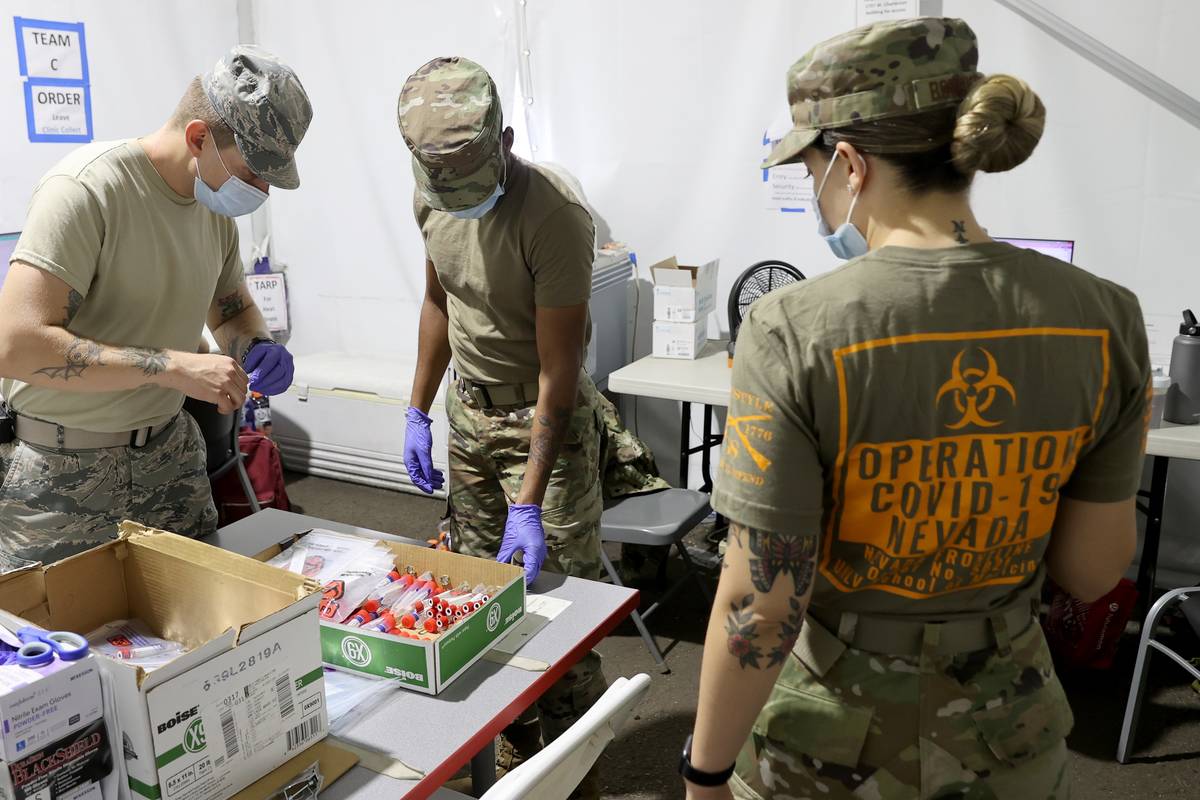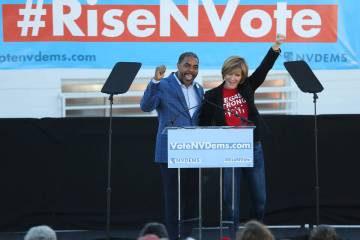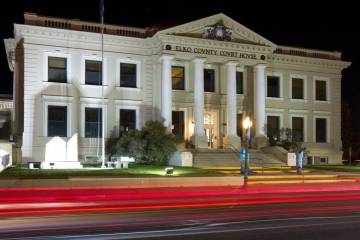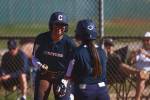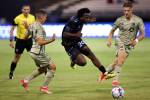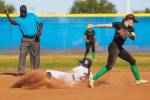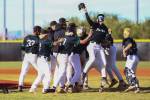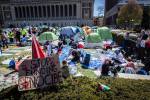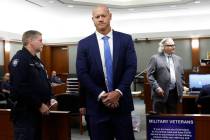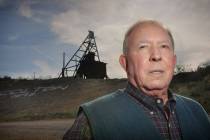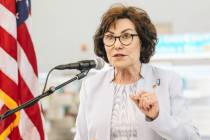Nevada has deadliest week from COVID-19; worse may be in store
This past week has been the deadliest for COVID-19 in Nevada.
The state reported 76 deaths from the coronavirus for the week through Friday, above the previous high of 68 reported in early April.
The surge in deaths, which accompanied record numbers of cases and hospitalizations, follows the phased reopening of the state’s nonessential businesses, which were ordered to close in mid-March and most of which were allowed to reopen on May 9 or May 29, followed by casinos on June 4.
Responding to the resurgence in cases, Gov. Steve Sisolak mandated the wearing of face coverings in public beginning June 25. He directed bars to once again shut their doors on July 10.
Forecasts by universities and U.S. government researchers predict that things will get worse before they get better. They predict the number of deaths in the next four weeks will exceed those recorded over the past four weeks in the U.S., as well as in 25 states and one territory, according to the Centers for Disease Control and Prevention, which analyzed 26 different forecasts.
The forecasts indicate that it’s likely that deaths across the country will increase from about 145,000 as of Friday to between 160,000 and 175,000 by Aug. 15. The states with the greatest likelihood of a larger number of deaths include Nevada with Alabama, Florida, Georgia, Idaho, Oklahoma, South Carolina, Texas, and Utah, according to the CDC.
Most of the forecasts show deaths in Nevada, which numbered 722 as of Friday, increasing to between about 800 and 1,300 by Aug. 15. Nevada has recorded nearly 41,000 total cases since the first case was reported in early March.
How did Nevada get to this point? And where do we go from here?
On Friday, the Review-Journal spoke with Brian Labus, a member of Gov. Steve Sisolak’s COVID-19 medical advisory team, to get his take. Labus is an assistant professor of epidemiology and biostatistics at UNLV’s School of Public Health. Until 2015, he was a senior epidemiologist at the Southern Nevada Health District.
Review-Journal: This has been the deadliest week for COVID-19 in Nevada. What brought us to this grim milestone?
Brian Labus: We have seen cases increasing over the past few weeks. And this is just the natural outcome of that increase. There is a delay between when people get sick and when they go to the hospital and when they ultimately die. And so what we’re looking at is people that were infected several weeks ago.
Right, state officials said Thursday that the deaths we’re seeing this week reflect people who became infected roughly five weeks ago. What was happening then that could have led to the increased transmission?
Well, at that point, we had pretty extensively reopened different things in Nevada. We had stores open, businesses open, the Strip was open, and we had yet to put in any sort of mask mandate. So we were basically allowing the greatest amount of social interaction at the time and didn’t have all the mitigation steps in place that we need.
As you mentioned, last month casinos opened. There were crowds of hundreds and even thousands of people on the streets without social distancing. Can you speak to how each of these things might have played a role in what we’re seeing today?
I think people want to look at individual events and say ‘it was a protest,’ or something like that, that led to the outbreak. But what really happened is people started to go about their daily lives, and that is what leads to increased disease transmission. We had people going to restaurants. We had people having birthday parties and gatherings and pool parties and things like that. Every one of those things is an opportunity for people to come together. And if they’re not practicing appropriate social distancing, it’s an opportunity for disease transmission. So it’s not like there was one event that got us to this point. It was really all of those things coming together to increase spread throughout the community.
Are we seeing any benefit from the mask mandate?
We’re just at the point now where that’s going to be reflected in our data. It was basically four weeks ago that this happened. It takes three weeks to see things in the data. But it took us a little while to get everyone to follow the mask mandate. It took a while to get businesses to enforce it. So we’re just at the point now, where we can start to see the effects of that. But I think it’s too early to say exactly what that’s done.
Do you believe we’ll see a large impact from the mask mandate?
I expect to see a decrease in cases because this is one of the best steps we can take. But then the governor has done some other things since then. And each one of those things will have an opportunity to decrease disease transmission. If more people are wearing masks, that’s great. But if they’re offsetting it by doing a bunch of other things that put them at risk, we’re not going to see that change. But I’m hopeful that the mask mandate will slow the increases that we’ve been seeing and ultimately turn the tide.
And what are the other directives from the governor that should help the situation?
He started looking at bars — that was one thing — and closing those sorts of things down. He also was putting more detail into the mask mandate. So for example, you have to wear masks in gyms, but he gave more detail about when you should be doing that. We don’t expect people to work out and be on a treadmill or something like that and wear the mask. But as soon as they get off, they need to put that mask on as they’re walking around the room.
What other things do you think should be done? Do you think we should return to more draconian lockdown measures?
Well, that’s a tricky question because it isn’t just a simple public health issue. It has to do with our economy and everything else that’s tied with Las Vegas. So there are a couple steps before we get to those more strict measures. We can decrease the number of people that are allowed in certain gatherings. We could decrease the capacity in different places before we completely close them. So there’s a couple steps along the way before we get to those extreme measures, but there aren’t many of them.
Where could numbers of people be cut down? Can you give an example?
If we think back to where we were in March, if you went out in public, the streets were empty. People were not flocking to stores. They weren’t treating it just as a normal day. We really had low density of people going out and doing things. And you could put rules in place that basically kind of return us to that lower density, where you have decreased numbers of people in restaurants, or even push the restaurants back to carry-out only. You could decrease the number of people that are allowed in a store at any given time, so that people aren’t just going to a store to wander around and shop because they’re bored, but they’re basically going out for their essential supplies.
Do you think casinos should be shut down?
That’s a very difficult decision and one the governor makes not just based on public health matters, but on economic matters and everything that happens when you do that in Las Vegas. It’s easy to say if we close it down, we won’t have any sort of disease transmission, but there are problems that creates with putting a lot of people out of work. And yes, you didn’t get coronavirus, but you weren’t able to feed your kids or you lost your health insurance or things like that. But it’s a very difficult thing to try and figure out. And so, from a public health standpoint, any closures we have are going to move us toward decreased transmission, but it’s not just based on public health.
What do you forecast in terms of numbers of cases, hospitalizations and deaths in the coming weeks?
If we see spikes in positives today, we know that a week from now or so we’ll see the corresponding increases in hospitalizations. Because it takes time between when people initially get sick and when they’re seriously ill enough to go into the hospital. … And then trailing that by a week or two, we can see the deaths that occur. … Beyond that, it’s really impossible to say where this is going to go because there are so many things that can change in the course of the outbreak.
We’re looking at a rough next few weeks, it sounds like, but do we know what to expect beyond that.
It’s really impossible to say. We know that with these increases in cases, we will see more hospitalizations and more deaths. … It doesn’t mean the situation’s gotten worse. It’s basically just the data catching up to reality.
Do you see any positive signs this week?
The data really hasn’t changed much this week. So really it’s not like anything has reversed direction. … We continue to see a lot of disease transmission, we continue to see increases in deaths and hospitalizations. So at this point, everything is still heading in the wrong direction.
Anything else on your mind this week?
I think the problem we have is that if we did something that works perfectly today to stop disease transmission, we won’t see it in our data for a while. And so people assume that ‘oh, it didn’t work.’ And you have to recognize that all the numbers we’re seeing show us where we were, not where we are. And it’s really difficult to plan based on that.
This interview was edited for clarity and length.
Contact Mary Hynes at mhynes@reviewjournal.com or 702-383-0336. Follow @MaryHynes1 on Twitter. Review-Journal staff writer Michael Scott Davidson contributed to this report.



